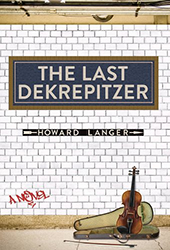New York City has always been a mecca for the arts. One of its most renowned venues is the world-famous Carnegie Hall, built by Andrew Carnegie in 1891. Singers such as Marian Anderson and lecturers like Albert Einstein have graced its glorious stage, and Pyotr Tchaikovsky himself conducted a concert during the Hall’s opening night.
Isaac Stern, an internationally lauded violinist and the son of Ukrainian refugees fleeing the Holocaust, performed at Carnegie Hall often and considered it one of his favorite venues — a second home, even.
In 1960, Isaac got word that Carnegie Hall was slated for demolition. City planner Robert Moses had his own vision for New York that did not include the elegant Carnegie Hall. Incensed and driven to action, Stern gathered musicians, dancers, former audience members, and anyone he could find who appreciated music to stage a protest. He spoke to influential politicians, and even enlisted Eleanor Roosevelt’s help. He circulated a petition among the many celebrities who graced Carnegie Hall’s stage over the years. But vast amounts of money were needed, and achieving Isaac’s goal seemed impossible. Then he had a creative idea. Carnegie Hall, he decided, could become a center for music education with the best, most talented music teachers in the world educating children and having them perform on the historic, magnificent stage. Isaac spoke to everyone influential he could reach, raised funds, and finally prevailed. With the help of Jacob Kaplan, an owner of Welch’s grape juice company, he formed a committee that drew up a plan to make Carnegie Hall a self-supporting, invaluable asset to music education. Stern’s committee had to race against the ticking clock; city laws had to be changed quickly to prevent the destruction of the building. They pushed the necessary changes just in time, and Isaac’s dream came true. Americans from all walks of life, including immigrants like Isaac’s own family, would be able to share in this special resource for music education for generations to come.
Megan Hoyt tells the story of Stern and his beloved Carnegie Hall with drama, flair, and suspense. Katie Hickey’s art, with its rich tones, reflects the majesty of the building and the vibrancy of the city. This special book deserves wide dissemination and can also find an important place in school curricula featuring both the arts and the history of New York City.
Michal Hoschander Malen is the editor of Jewish Book Council’s young adult and children’s book reviews. A former librarian, she has lectured on topics relating to literacy, run book clubs, and loves to read aloud to her grandchildren.





